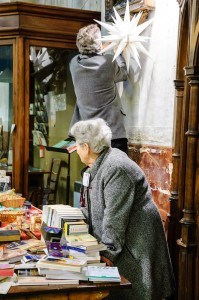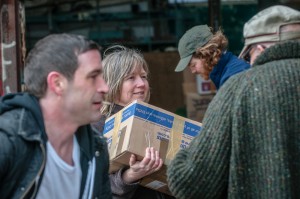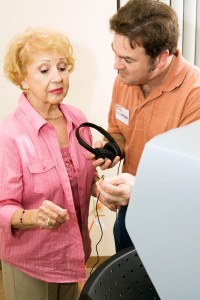
One of the roles that policy makers commonly envisage for the third sector is providing preventative support and opportunities that enable older people to avoid reliance on public sector services and enjoy a better quality of life. This vision chimes with the mission of many third sector organisations, who were often created as a response to a historic lack of support for older people from statutory services and continue to have this focus in the present day (Miller et al 2013).
Older volunteers are at the heart of this vision and mission on the basis that their skills, experience and commitment will result in direct services that are relevant, good quality and cost-effective in comparison to those reliant on paid staff. Furthermore volunteering is seen as a positive activity in its own right through providing opportunity for older people to keep active and enhance their own social networks. It can also be seen to reflect the wish of many older people for their considerable strengths and assets to be recognised, in contrast to the common policy and media narrative of the increasing ‘burden’ they place on society.
This appears then to be a rare thing – an aspect of social care in which the aspirations of policy makers, third sector organisations and older people themselves are in tune. However it is not yet clear as to the amount of potential value that such initiatives have, and in particular if the social capital that they create or unleash is sufficient to address the challenges that will be created by our changing demographic and society. Key issues in this regard include – what makes some people volunteer and others not; the best balance between public, private and charitable funding; and inequalities in volunteering between communities and localities.

Volunteering is seen as a positive activity in its own right.
Methods
This research sought to explore issues of volunteering and older people with a particular focus on how
the experiences of older people and the responses of ageing communities are connected with and through ‘place’.
It builds on previous work that identified the importance of ‘place’ to voluntarism, with place being conceptualised as both a ‘physical (a location, an environment) and social (a community, a process)’ phenomenon.
The research focused on the work of a third sector organisation based in rural Ontario. The local population typifies the changing demographics in such regions in Canada in terms of age profile and physical health. The organisation provides support to older people through a variety of social care and general wellbeing services including provision of meals, transport and befriending.
The research was carried out by a team from Trent University over the course of 4 years and involved them engaging extensively with volunteers, partner organisations, older residents and their family carers. Data gathering involved telephone and face-to-face interviews, focus groups, surveys and analysis of web-based information.
Findings
The study identified a number of important connections between ‘place’ and ‘voluntarism’. These included:
- practical, as the rural location provided logistic and financial difficulties in relation to volunteers travelling to those living in more remote locations;
- economic , as there was insufficient public sector funding available to purchase services to meet local demands putting pressure to increase fund raising;
- historic, in that two previous third sector organisations had been willing to amalgamate to provide a stronger joint offer; and
- cultural, with what appeared to be a wide-spread interest in the local population for volunteering and in making the area a positively ‘ageing place’.
Despite the apparent strengths of the organisation and its volunteers the study also found challenges and tensions. For example, there was ‘unevenness’ in volunteering rates across the locality, a clash in expectations between government and the organisation regarding their role in supporting economic renewal, and concerns about sustainability in the future due to many local people having a fixed income due to retirement.

‘Place’ was conceptualised as both a physical and social phenomenon.
Strengths and Weaknesses
This article is essentially an amalgamation of a series of studies completed by the research team in relation to the third sector organisation and does not contain all of the details of these constituent studies. From the information available it appears to have deployed appropriate methodologies that should have provided rich and relevant data. It identifies the need to complete similar research in other localities and countries and to explore specific dimensions such as gender, diversity and ageism.
To these can be added an exploration of the different motivations and perceptions of those within the local population who choose not to volunteer, and the influence of place upon their decision not to commit their time and energy. It would also be interesting to understand if there were other organisations or groups who wanted to recruit volunteers and the impact of having such a successful recruiter in their patch, and greater nuance regarding the different activities that were undertaken and the motivations and challenges these presented.

Physical and social place would seem to influence volunteering by and for older people
Conclusions and Implications
Physical and social place would seem to influence the demand, design, delivery and sustainability of volunteering by and for older people. The use of volunteering as an intervention to improve the quality of life and wellbeing of older people therefore needs to be sensitive to issues of place, and it should not be assumed that volunteering services which seem to work in one locality will automatically work in another. This means that –
- national and policy makers must be sensitive to issues of place and to work with local third sector organisations and most importantly older people when considering how volunteering can contribute to social care related outcomes
- third sector organisations should seek to offer and support older people opportunities to have influence and leadership of the design and delivery of volunteering services that they currently provide or wish to do so in the future
- practitioners should recognise the individual and collective strengths of older people and seek to promote and enable these to the benefit of the individual and their community
Link
Skinner, M. W. (2014). Ageing, place and voluntarism: towards a geographical perspective on third sector organisations and volunteers in ageing communities. Voluntary Sector Review, 5 (2), 161-179. [Abstract]
References
Miller, R., Mangan, C. and Allen, K. (2013) Older people’s prevention services: Comparing perspectives of local authorities and the third sector. London: NIHR School for Social Care Research [Full Text]

@SocialCareElf wonder if there are cultural differences in views of volunteering between Canada and Uk?
Welcome to the woodland @RobinHSMC It’s great to see your debut @SocialCareElf blog
“@SocialCareElf: Older people’s volunteering and connection to ‘place’ http://t.co/wRYpVR2cTx @FoodTrainScot @jeanelgar
Older people’s volunteering and ‘place’ http://t.co/BDWcNTvl5H
Nice to see a blog on an international study – fascinating convergence of positive benefit. Also the importance of place – geography is an interesting aspect that social care misses often – however, raises questions on the interface between volunteering and professional support?
@SocialCareElf Great blog @RobinHSMC Volunteering and the impact of place – good to see Geography issues raised
http://t.co/tF3Tiw04SE
Read @RobinHSMC blog on research into ageing, volunteering and place http://t.co/NRztmOz72e #olderpeople #volunteering
@RobinHSMC Older people’s volunteering and connection to ‘place’ http://t.co/NRztmOz72e @jrfemma @IndependentAge @RoyalVolService
Older people’s volunteering and ‘place’ by @RobinHSMC @SocialCareElf
http://t.co/EkGB8ozkzp